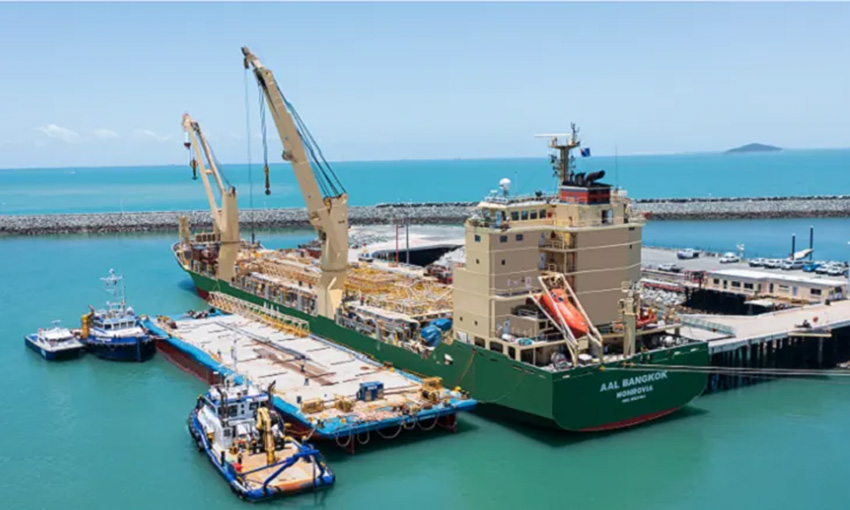A PROJECT to replace a berth and shiploaders at the Hay Point Coal Terminal was progressed with the delivery of five project cargo shipments facilitated by AAL Shipping.
The company’s Asia to Australia East and West Coast Liner Services delivered a series of five project cargo shipments from Shanghai to Mackay for the project.
Harnessing several of AAL’s 19,000-DWT S-class fleet of heavy lift vessels and commissioned by
Global logistics provider Geodis Australia commissioned several of AAL’s 19,000-DWT S-class fleet of heavy lift vessels to transport berth components.
The brownfields project involves the disassembly and replacement of one of the existing berth and shiploaders to improve cyclonic wave immunity to terminal operations.
The site is located within the lease boundaries of the Hay Point Coal Terminal.
The first shipment carried heavy-lift components to facilitate the on-site installation of new berth modules. The cargo comprised of temporary steelworks including walkways, platforms, huts and piles – the latter between two and 53 metres in length.
Shipments two, four and five from China transported components in support of preparatory works, including modification of existing concrete caisson berth foundations, disassembly and removal of the existing berth and ship loader and on-site installation, tie-in and commissioning of new berth modules.
Shipment three, from China to Henderson on the Australian West Coast, comprised 86 frames and walkways and enabled the off-site fabrication of new berth topside modules (decking, ship loader rail beams, conveyor galleries and sections) and the new shiploader.
AAL general manager Frank Mueller said the company had worked extensively with Geodis Australia over the years.
“The Australian market has been experiencing significant terminal congestion issues, extended waiting times and increased port charges,” he said.
“The success of our operations involves the careful handling of these challenges – either mitigation of potential port congestion and detention charges, or schedule optimisation by remaining flexible and having the ability to add inducement ports, when required.”
AAL global head of engineering Nicola Pacifico, speaking on behalf of the engineering team at AAL Shanghai who planned most of the shipments into Mackay, said the cargo components were loaded in Shanghai from barge, truck and wharf – depending on their unit size – and carefully stacked and secured these on deck into tiers of three and four units high to ensure as much cargo as possible could be safely stowed on each sailing.
“Local COVID restrictions in China meant that our cargo superintendent could not physically attend loading, instead we monitored activity via live video feed and online comms with our master and crew,” he said.
“Before the pandemic, remote supervision of such operations was rare. Today, it is a fact of life and all our teams have been extensively cross trained to execute work under these forced conditions.”

